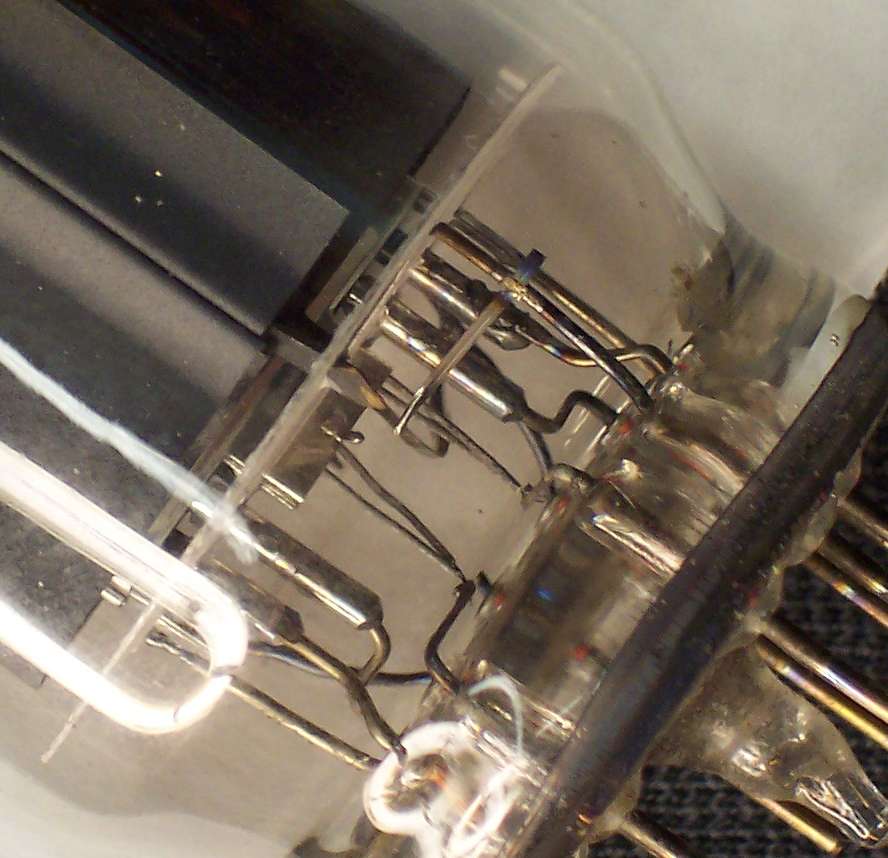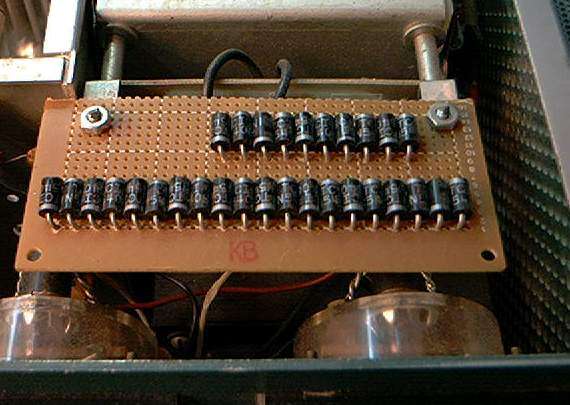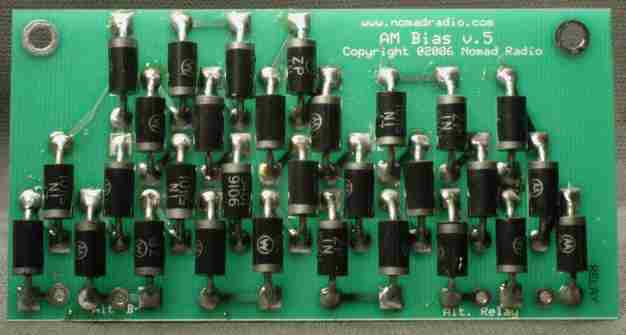Before you discard those "snapped" M2057 tubes, take a good look at the cathode fusable links going to pins 2 and 7. The cathode on 8950's and M2057's are double strapped to individual pins. Most amplifiers did not wire both pins on the socket in parallel so you only had half of the current capacity before one opened. The good news is many have a second life if you wire the socket correctly. When possible I install a cathode fuse so it opens before the tube does.
You are using an out of date browser. It may not display this or other websites correctly.
You should upgrade or use an alternative browser.
You should upgrade or use an alternative browser.
-
You can now help support WorldwideDX when you shop on Amazon at no additional cost to you! Simply follow this Shop on Amazon link first and a portion of any purchase is sent to WorldwideDX to help with site costs.
matching tubes
- Thread starter 517 Leroy
- Start date
I have a couple old tube audio amplifiers upstairs in my son's old bedroom from when he use to play in a Band...Guess I need to see what's in it...The problem with the 6LQ6 tube is it wasn't only popular in CB linears. It was also used in some of the most expensive audio amplifiers ever built in matched sets of 8! If you own one of those 8 tube AF amps, it doesn't matter if the tubes cost $250 each. Those owners will pay anything to keep them alive.
Most tube audio amps used the 6L6GC tube, especially in electric guitar amps. The 6LQ6 was mostly used in large numbers on the most powerful McIntosh amplifiers. If you have one of those, you won't want to take the tubes out of it. Sell it and buy any linear you can dream of. Maybe two or three of them at that.I have a couple old tube audio amplifiers upstairs in my son's old bedroom from when he use to play in a Band...Guess I need to see what's in it...
Ah, the infamous 8950 "cathode fuse".
Like this one. The bottom of the cathode is near the center of the pic, and has a tiny ball of melted aluminum where a flat ribbon made a right angle leading to pin 2.

The M2057 is pretty much a beefed-up 8950. Behaves pretty much the same but with more anode dissipation.
No such luck. The blue flash was a gas arc in each of the tubes, pretty sure. Tubes that had checked okay on our computerized Hickok for both transconductance and max cathode current now checked dead after the flash.
The tester can't put more than 250 Volts DC on a tube. The Maco puts 950 Volts DC on them.
Some tubes stand up the stress of the Maco's design, some don't.
73
Like this one. The bottom of the cathode is near the center of the pic, and has a tiny ball of melted aluminum where a flat ribbon made a right angle leading to pin 2.

The M2057 is pretty much a beefed-up 8950. Behaves pretty much the same but with more anode dissipation.
No such luck. The blue flash was a gas arc in each of the tubes, pretty sure. Tubes that had checked okay on our computerized Hickok for both transconductance and max cathode current now checked dead after the flash.
The tester can't put more than 250 Volts DC on a tube. The Maco puts 950 Volts DC on them.
Some tubes stand up the stress of the Maco's design, some don't.
73
Last edited:
Sometimes you can reduce internal arc failures by running the filament for hours before applying HV or RF. Then continue with just HV. Then manually key the relay without RF for bias and see if it holds. If they are real gassy this was just a waste of time but if they were on the edge, this can often make the difference in getting them past those first keydowns.
950 volts is ridiculous for these tubes but so common. Where is the headroom for RF at this voltage? Even worse is the grounded cathodes many used that made the tube draw tons of bias current before RF is even applied. Many can benefit from a string of diodes in the cathode circuit to limit bias current to no more than 20 ma per tube.
950 volts is ridiculous for these tubes but so common. Where is the headroom for RF at this voltage? Even worse is the grounded cathodes many used that made the tube draw tons of bias current before RF is even applied. Many can benefit from a string of diodes in the cathode circuit to limit bias current to no more than 20 ma per tube.
We adopted a standard practice of putting a negative 8 Volts on the grids of Maco amplifiers, with a 1k grid-return resistor for the driver tubes.
Without that, they will run too hot. The tubes' cathode returns are cut by the center section of a 3-pole relay to cut them off until you key it.
Mostly we use cathode bias with a zener diode only on larger transmitting triodes. This one is used with two 3-500Z tubes in the Heath SB220.
Not a big trick to wire thirty of them in series. Much more robust than the 10-Watt zener diode the factory used.

You would never use this many for sideband, but the 20 Volts you get from this setup is about perfect for running that tube in AM.
This is the board we use for that purpose.

Much less labor than drilling sixty holes in perfboard.
73
Without that, they will run too hot. The tubes' cathode returns are cut by the center section of a 3-pole relay to cut them off until you key it.
Mostly we use cathode bias with a zener diode only on larger transmitting triodes. This one is used with two 3-500Z tubes in the Heath SB220.
Not a big trick to wire thirty of them in series. Much more robust than the 10-Watt zener diode the factory used.

You would never use this many for sideband, but the 20 Volts you get from this setup is about perfect for running that tube in AM.
This is the board we use for that purpose.

Much less labor than drilling sixty holes in perfboard.
73
I've tried everything from zeners to zeners buffered by a pass transistor in shunt mode and absolutely nothing is as bulletproof as the diode string you're using there. They tend to survive even the worst internal tube arc.
The negative voltage on the grid of a sweep tube was popular in many amplifiers. The one problem I noticed is as the tubes age they produce more secondary emissions that can drive the grid more positive or reduce the negative voltage. Classic sign of this is key the mic and within a few seconds you notice a power increase as the tubes heat.
This doesn't usually happen when the tubes are in great shape but you can keep lesser tubes running stable by grounding the grids and using diodes in the cathode bias circuit. This can also be stabilized if the voltage feeding the grid is coming from a low impedance source loaded down resistively.
The negative voltage on the grid of a sweep tube was popular in many amplifiers. The one problem I noticed is as the tubes age they produce more secondary emissions that can drive the grid more positive or reduce the negative voltage. Classic sign of this is key the mic and within a few seconds you notice a power increase as the tubes heat.
This doesn't usually happen when the tubes are in great shape but you can keep lesser tubes running stable by grounding the grids and using diodes in the cathode bias circuit. This can also be stabilized if the voltage feeding the grid is coming from a low impedance source loaded down resistively.
